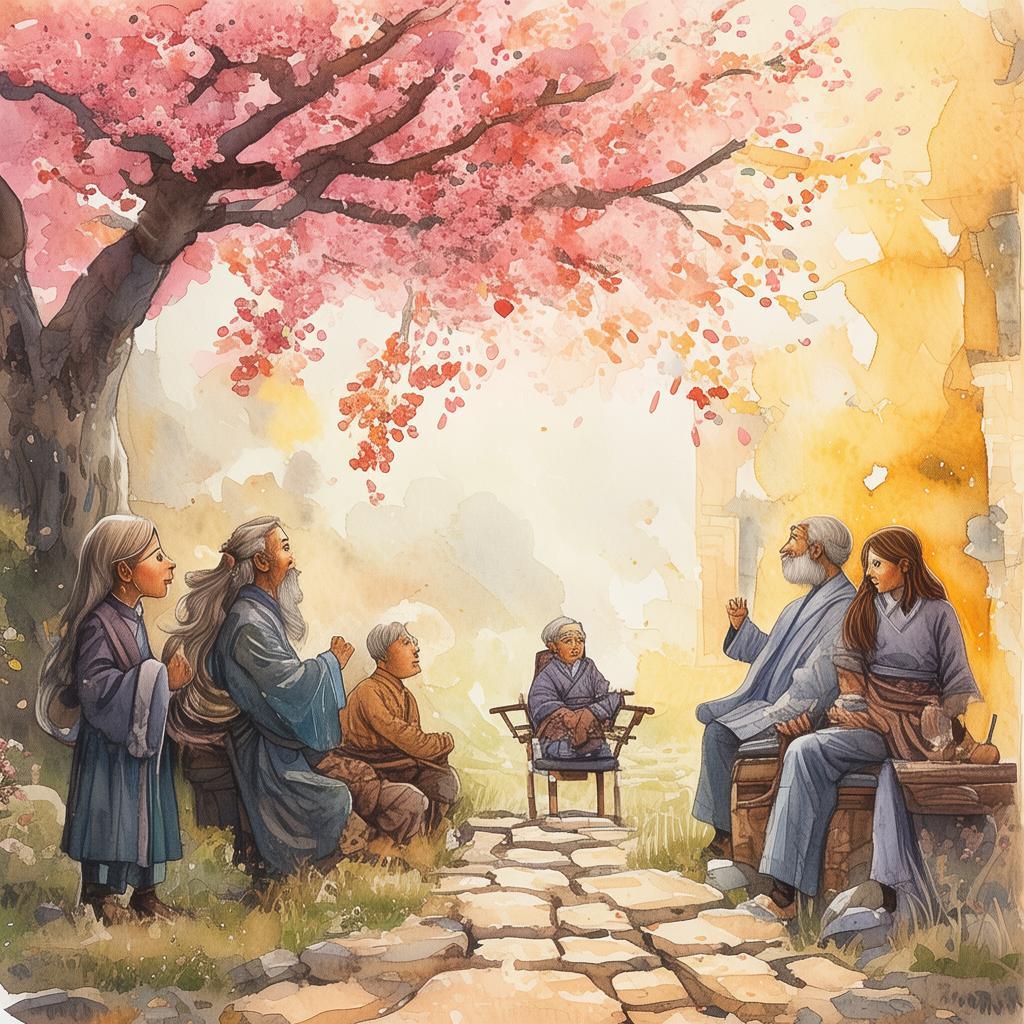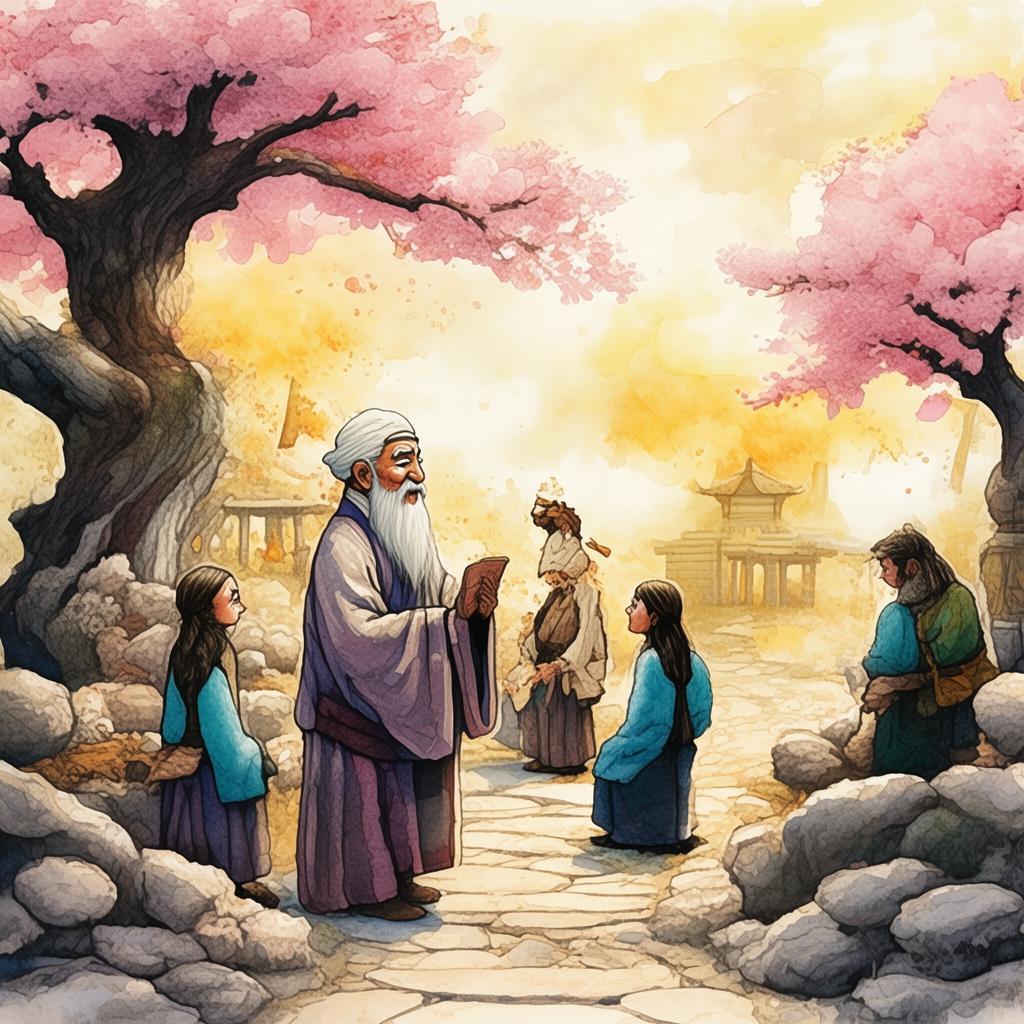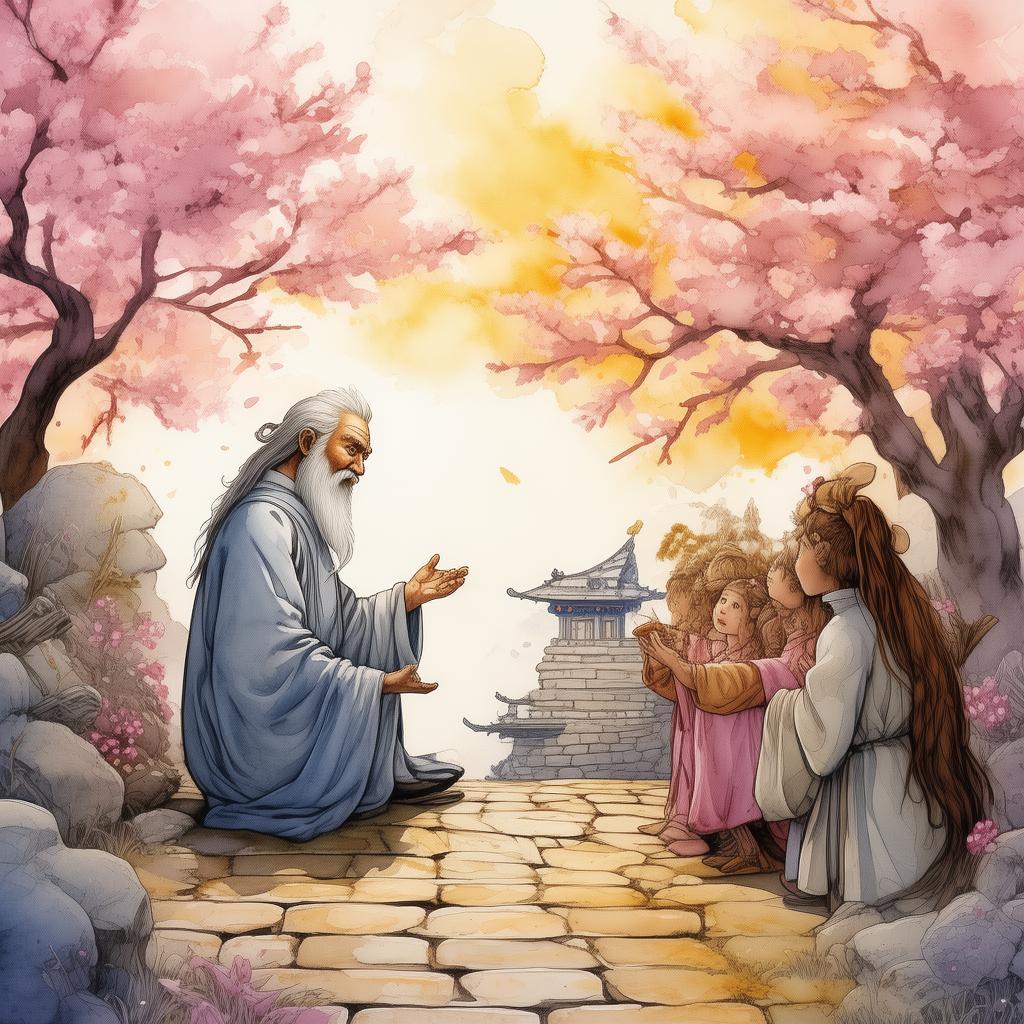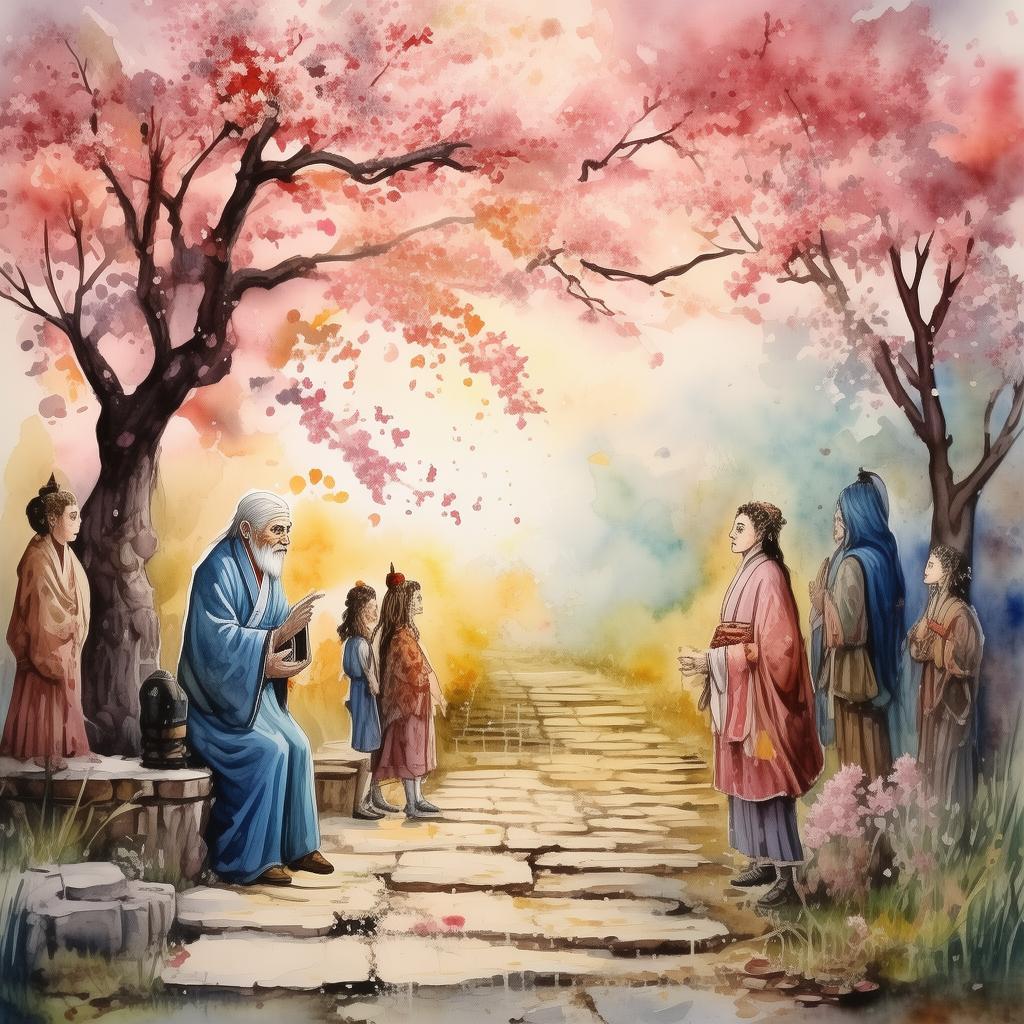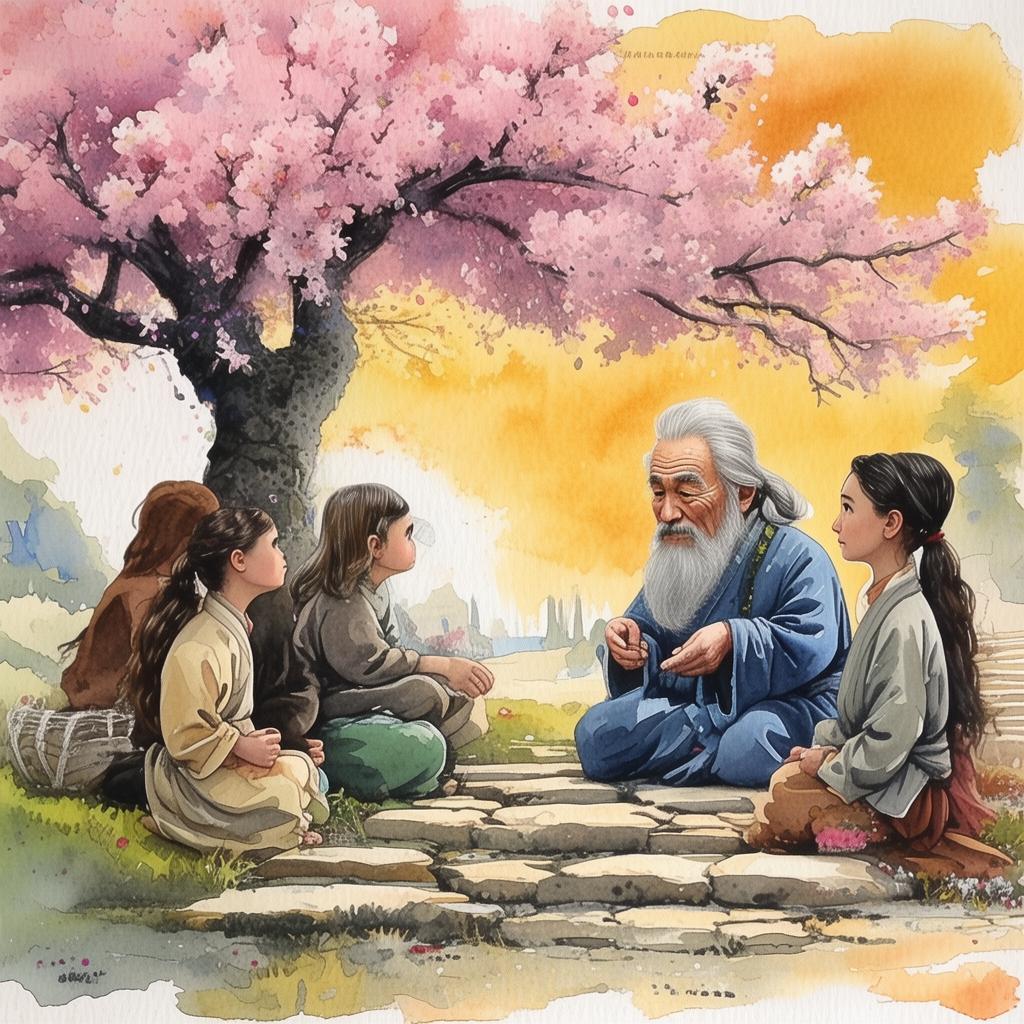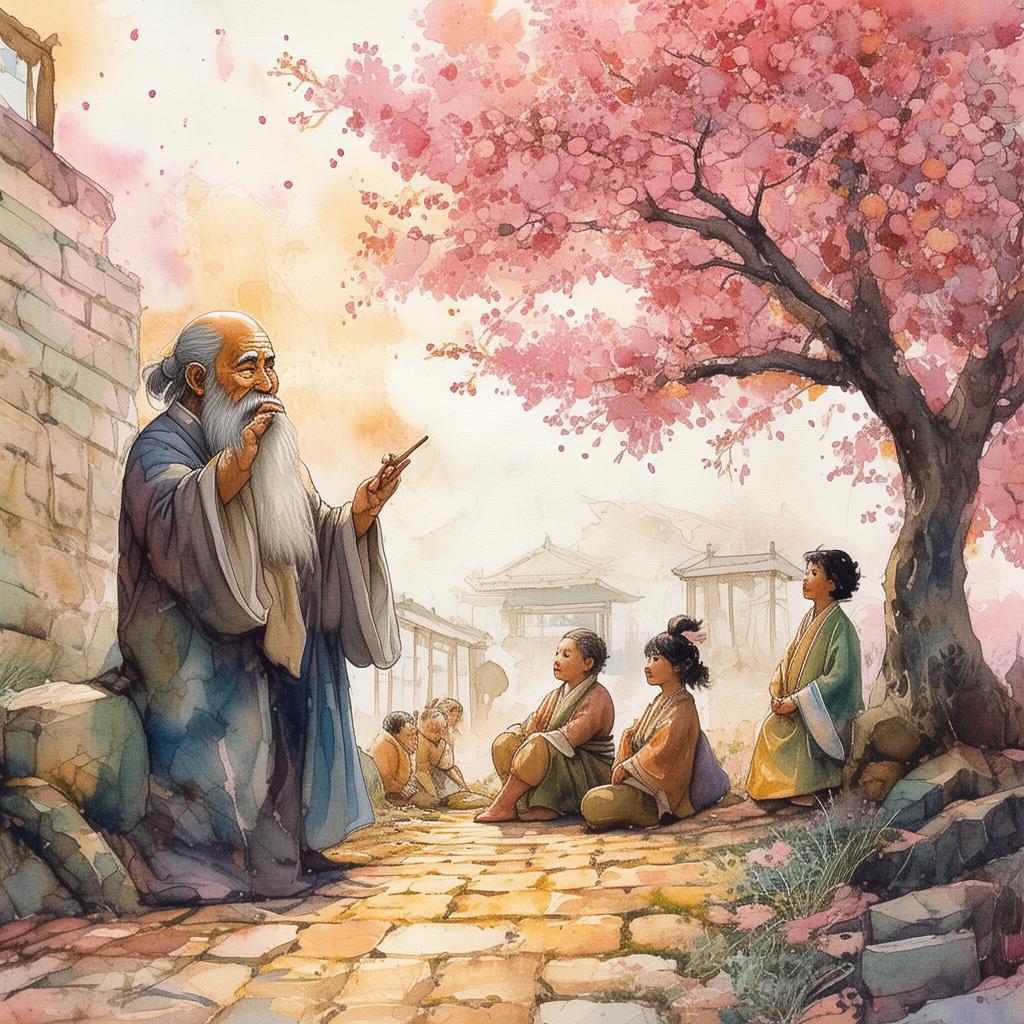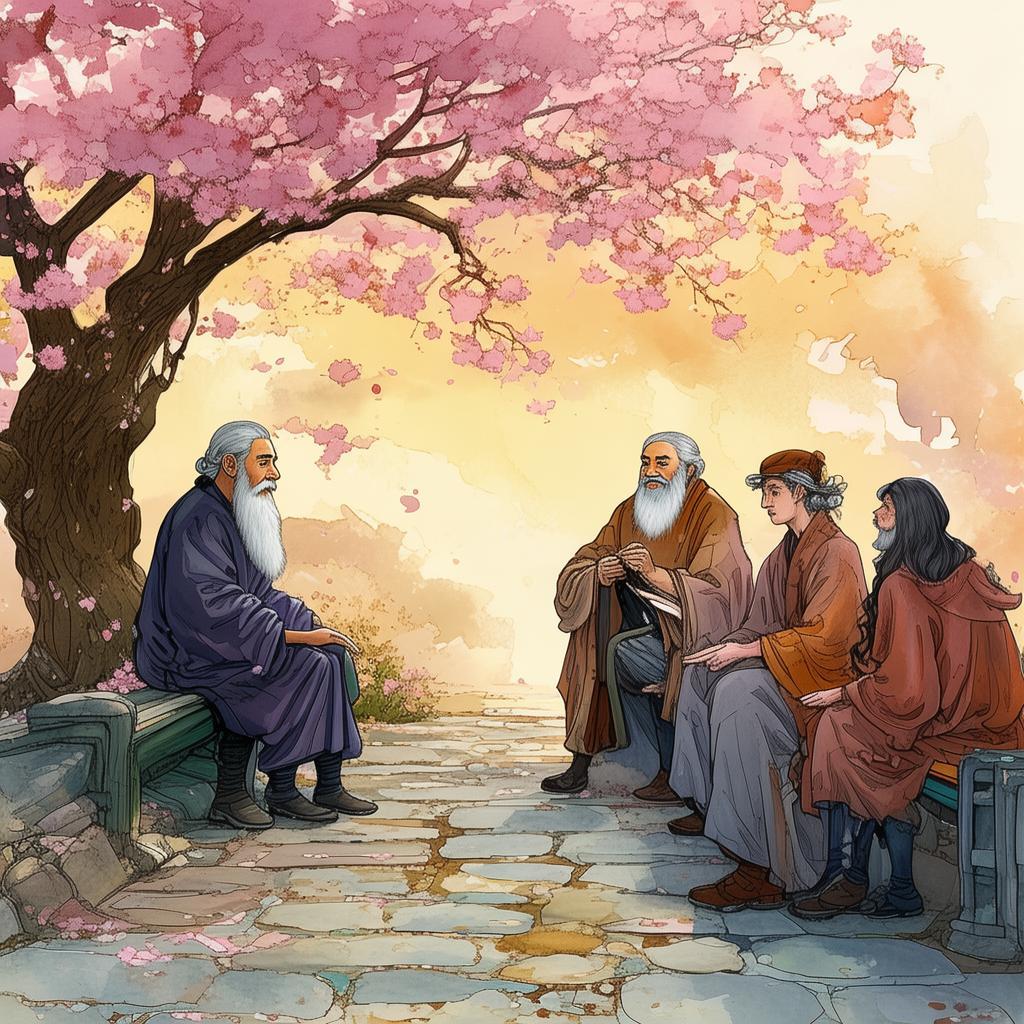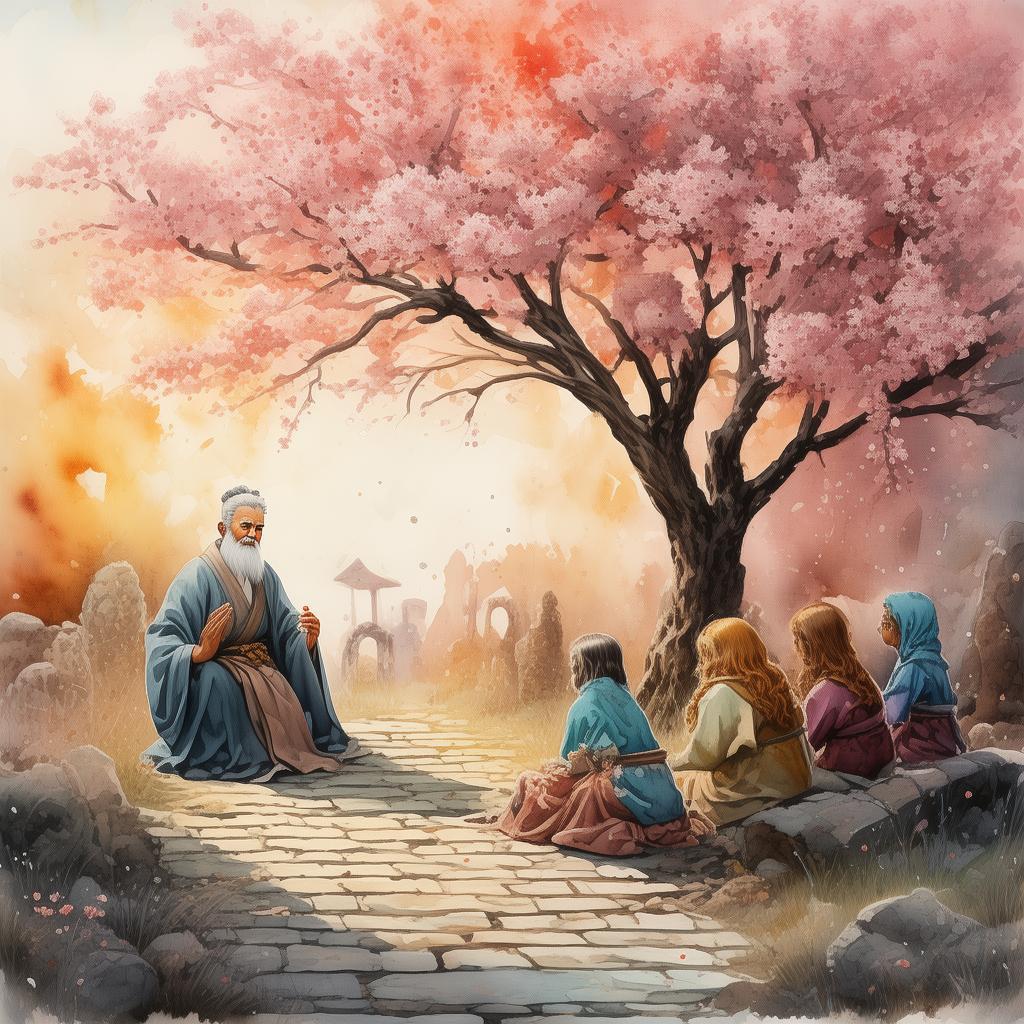The Veil of Silent Harmony
In the serene town of Jingcheng, nestled among rolling hills and whispering bamboo groves, there lived a young scholar named Ming. Ming was known far and wide for his insatiable curiosity and his unwavering pursuit of wisdom. He had heard tales of an ancient text, The Innermost Harmony, which was said to contain the secrets of the universe and the very essence of life. Ming resolved to uncover its hidden wisdom.
One crisp autumn morning, Ming ventured into the heart of the Bamboo Forest, where the text was rumored to be kept. As he ventured deeper into the forest, the air grew cooler, and the sounds of the world outside seemed to fade into the distant hum of nature. Ming followed a narrow path, lined with ancient stone slabs inscribed with cryptic symbols. The path twisted and turned, leading him further into the unknown.
After hours of traversal, Ming reached a clearing bathed in the soft glow of the morning sun. In the center stood a large, weathered stone tablet, covered in intricate carvings. He approached it cautiously, his heart pounding with anticipation. As he traced the carvings with his fingers, he discovered a hidden compartment within the stone. To his astonishment, it contained a small, ornate scroll.
With trembling hands, Ming unrolled the scroll and began to read. The words on the scroll were in an ancient script, filled with symbols that seemed to pulse with a life of their own. As he deciphered the text, Ming felt a strange connection to the words, as if they were speaking directly to his soul. The scroll spoke of the Innermost Harmony, a concept that transcended time and space, a melody that could only be heard by those who had cleansed their hearts and minds of all desires and ego.
Ming's journey had only just begun. He realized that the text was not a mere collection of words, but a guide to an inner journey that would test his resolve and his character. He learned of the "Innermost Veil," a metaphor for the layers of distractions and desires that clouded the mind and prevented one from attaining true harmony. The text outlined a series of trials designed to strip away these veils, each more challenging than the last.
The first trial was a test of patience and self-control. Ming was told to observe the world around him without judgment or desire, to become a passive observer of life's ebb and flow. As he practiced, he found his mind wandering, entangled in the ordinary concerns of daily life. Yet, with each passing day, he felt himself becoming more attuned to the subtle rhythms of nature, his heart opening to the beauty of the world without the need for attachment.
The second trial was a test of courage. Ming was instructed to face his deepest fears, to confront the shadows within his soul. He was taken to a secluded cave, where he encountered his own reflection in the still waters of a deep, dark well. He saw the fear, the anger, the sorrow, and the desire that lurked within him. With each breath, he faced these demons, allowing them to rise to the surface without resistance, until they were exposed to the light and dissolved into nothingness.
The third and final trial was a test of compassion. Ming was told to embrace those who were different from him, to see the divine spark within every living being. He was sent into the world to interact with people of all walks of life, to listen to their stories, and to offer his empathy and understanding. Through his interactions, he came to realize that true harmony was not found in oneself, but in the connections one made with others.
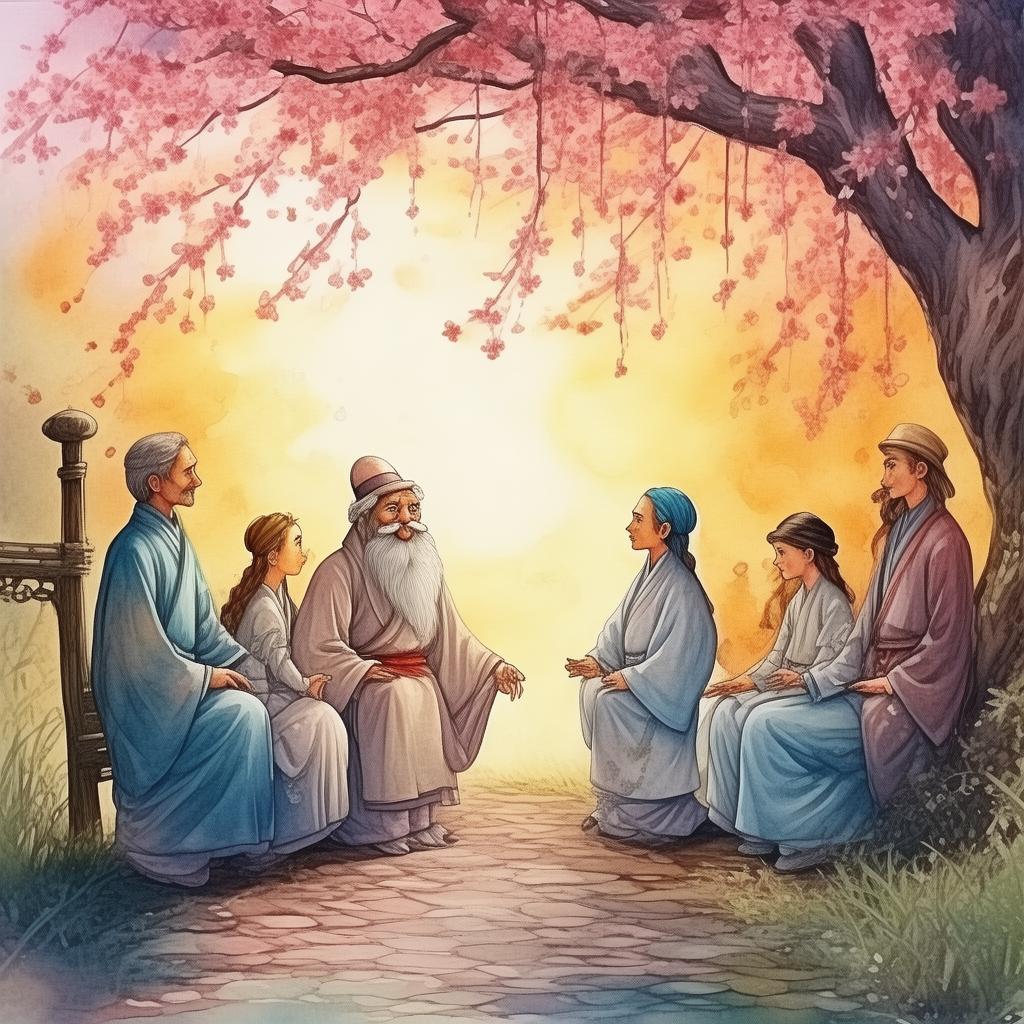
As Ming completed the trials, he felt a profound shift within himself. The Innermost Veil that had once shrouded his mind and heart had been lifted, revealing a clear, open space of pure awareness. He understood that the Innermost Harmony was not a distant goal but a state of being that could be experienced in the present moment.
Ming returned to Jingcheng, not as the same man who had left. He was now a beacon of wisdom and compassion, a man who had uncovered the true essence of life. The townpeople marveled at the changes in him, and soon, his teachings spread far and wide.
The Veil of Silent Harmony became a symbol of the transformative power of inner work, a testament to the idea that true harmony is not an external pursuit but a journey into the self. Ming's story became a legend, inspiring generations to seek their own Innermost Harmony and to live a life of purpose and fulfillment.
✨ Original Statement ✨
All articles published on this website (including but not limited to text, images, videos, and other content) are original or authorized for reposting and are protected by relevant laws. Without the explicit written permission of this website, no individual or organization may copy, modify, repost, or use the content for commercial purposes.
If you need to quote or cooperate, please contact this site for authorization. We reserve the right to pursue legal responsibility for any unauthorized use.
Hereby declared.

